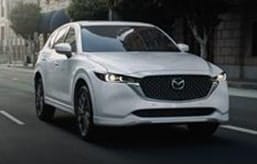- The Durango Hellcat has an advantage of 254 horsepower and 148 lb-ft of torque over the Model Y.
- Despite being heavier, the Dodge also has a better weight-to-power ratio, which should make this a close battle.
- The unique U-Drags format incorporates a standing start, a full quarter mile, hard braking, aggressive cornering and a rolling race to settle the argument.
U-Drags: Dodge Durango Hellcat vs. Tesla Model Y Performance: Can Gasoline Strike Back?
The Model Y can't match the Durango Hellcat's noise or ridiculousness, but is it faster down our U-Drags track?
Our latest U-Drags battle pits a supercharger against Supercharging, pairing up the Dodge Durango SRT Hellcat with our long-term Tesla Model Y Performance. This is the second time we've put a Dodge with that bonkers Hellcat engine up against electric competition; if you haven't seen that first video, spoiler alert: It didn't go so well for the Challenger Black Ghost against the Kia EV6 GT.
Working in the Durango Hellcat's favor is the raw output of that supercharged 6.2-liter V8. It puts 710 horsepower and 645 lb-ft of torque down to all four wheels courtesy of an eight-speed auto. The Tesla's power figures (456 hp and 497 lb-ft) are much more modest, but it enjoys the advantage (as all EVs do) of all of its torque being available right from the start. But the Durango does have a better weight-to-power ratio of 7.84 pounds per hp, which beats the Model Y Performance's 9.69 pounds per hp by a healthy margin.
Which of these faster-than-they-need-to-be SUVs will come out on top? You'll have to watch to find out.
Am I Ready for an EV?
- EV ownership works best if you can charge at home (240V outlet)
- Adding a home charging system is estimated to cost $1,616 in
- Edmunds is partnering with Treehouse, an independent provider of home EV installation services. Learn more about the installation services partnership
Edmunds says
In our U-Drags experience, we know that you count out these EVs at your own peril. Despite the power advantage that the Durango Hellcat enjoys in this matchup, this battle should be close all the way to the finish line.



 by
by